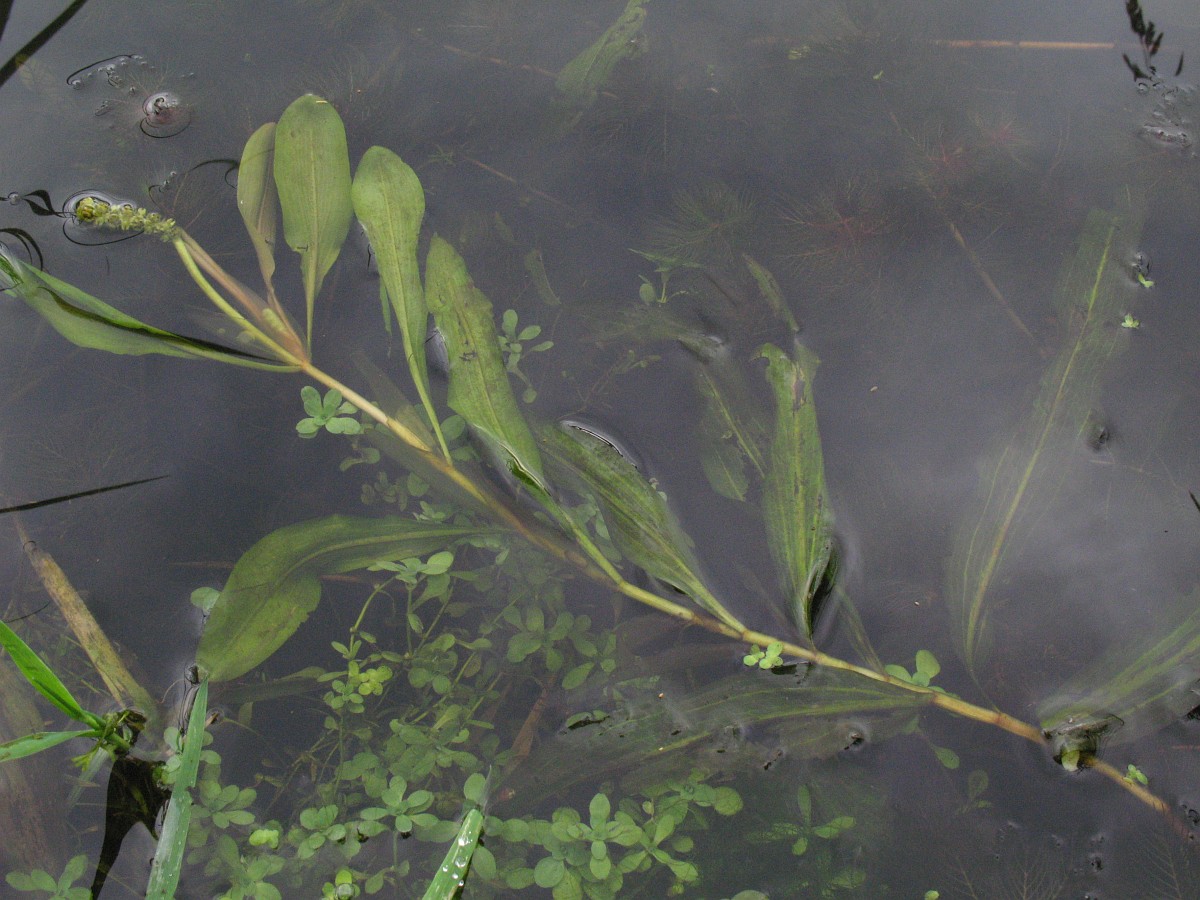Alpine Pondweed
(Potamogeton alpinus)

Description
Red pondweed is a perennial herb anchoring in the mud substrate via a creeping rhizome. It produces a cylindrical unbranched stem, up to 2.8 m in length. It has sessile lance-shaped submerged leaves that are typically 70-180 mm long and 10-25 mm wide with 4-7 lateral veins on either side and a slightly hooded apex, with an untoothed margin. Floating leaves may also be produced. The inflorescence is a spike of flowers a few centimeters long rising above the water surface. Turions are absent, but in winter each stem dies back to a resting bud with a short length of root, which acts as a functional turion.Red pondweed Potamogeton alpinus and shoreweed Littorella uniflora growing in a stream pool in North Wales.Red pondweed is a reasonably distinctive plant and is not likely to be confused with any other pondweed. Early in the growing season it could be confused with P. polygonifolius, but the submerged leaves of the latter have petioles and are relatively longer. P. praelongus is generally greener with noticeably white, zig-zagged stems that generally branch, never produces floating leaves, and its submerged leaves clasp the stem. Fresh specimens often, but not always, show a reddish tint, but this becomes much more obvious in dried material. Despite its name it is neither restricted to alpine regions or unique among pondweeds in having a reddish colouration.Chromosome counts show that, like most other broad-leaved pondweeds, P. alpinus is tetraploid, with 2n=52 chromosomes.
Taxonomic tree:







